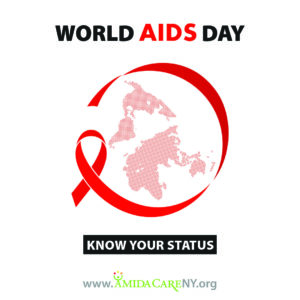World AIDS Day 2018: Breaking Through Stigma

As we commemorate World AIDS Day 2018, we remember those we’ve lost, celebrate the advancements we’ve made in the fight against HIV/AIDS, and take and urge continued action to break through the remaining hurdles to end the epidemic once and for all. We’ve come a long way since the early days of the epidemic. We now know that “Undetectable equals Untransmittable” (U=U), which means people who receive treatment and become virally suppressed can live longer, healthier lives and cannot transmit HIV to others.
New York, once the epicenter of the HIV/AIDS epidemic, has established itself as a national leader in efforts to end HIV/AIDS as an epidemic. Since the State’s Blueprint to End the HIV/AIDS Epidemic by the year 2020 was launched in 2015, the number of new HIV infections has dropped from 2,497 in 2014 to 2,115 in 2016, the latest year for which data is available, and new HIV infections have dropped by 40 percent over the last 10 years.
But there’s much more work to do, and our job won’t be done until we reach every community affected by this crisis. While New York’s progress is encouraging, increased investment is needed in communities most impacted by HIV/AIDS to achieve the ultimate goal of fewer than 750 new infections per year by 2020. In the U.S., 1.1 million people are living with HIV, and 15 percent don’t know their status. The CDC says that more than 90 percent of new HIV transmissions are a result of people who do not know they have HIV or are not receiving treatment.
This year’s New York City World AIDS Day theme is “Breaking Through Stigma,” which highlights the obstacles stigma and discrimination create for people living with HIV/AIDS and the need to ensure that all New Yorkers – regardless of race or ethnicity, sexual orientation, gender identity and expression, disability, income, or immigration status– have equitable access to health care, including HIV prevention, care, and treatment.
Testing
An HIV test should be a part of routine health care. The Centers for Disease Control and Prevention (CDC) recommends that everyone 13 to 64 years old get tested for HIV at least once. New York State recently removed the upper age limit for offering an HIV test. If you are at high risk of infection, you should get tested more often (such as every three to six months). There is no doubt that an early diagnosis and follow-up medical care can save lives.
Prevention
For people who are HIV-negative, access to pre-exposure prophylaxis (PrEP) and post-exposure prophylaxis (PEP) programs are essential to HIV prevention and reducing new incidences of HIV.
Data suggests that populations at higher risk of HIV acquisition, such as gay and bisexual men of color, women of color, and injection drug users, do not have equal access to the right care.
We need to break down the barriers that prevent access to HIV prevention tools, HIV testing, and life-saving treatment and care.
More Information:
Talk to your doctor and check out trusted government websites, such as the CDC.
To find a HIV testing site or HIV services near you in New York City, click here.
Amida Care currently serves 7,000+ members throughout the five boroughs of New York City, including people living with HIV/AIDS; people of transgender experience, regardless of HIV status, and people who are experiencing homelessness, regardless of HIV status. Confidential answers are available at 1-855-GO-AMIDA (1-855-462-6432) (TTY 711). Read our blog posts about HIV testing, HIV prevention resources, and accessing HIV treatment.
